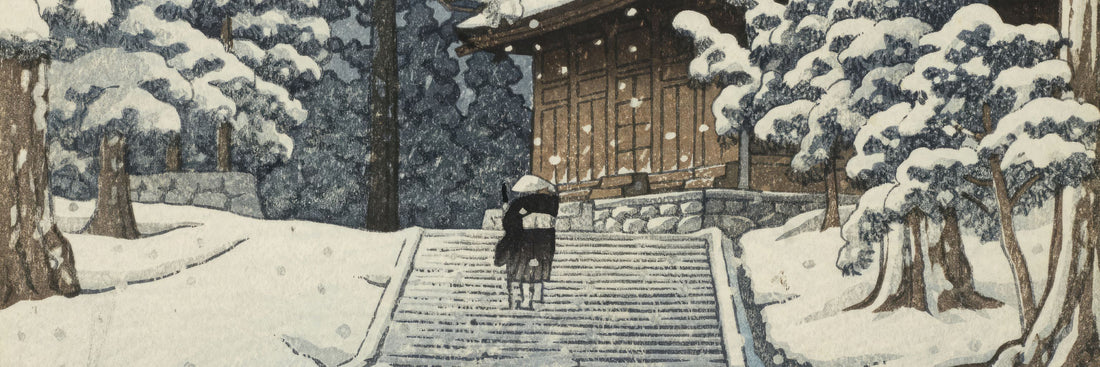
Winter Scenes of Japan: Hasui Kawase's Snowy Woodblock Prints
Share
Japanese artist Hasui Kawase is the creator of numerous prints of snow-covered landscapes and temples. During the last year of his life, when he was already ill and weakened, the master succeeded in completing what the Japanese call his zeppitsu, his ultimate work. This is the print entitled 'Hiraizumi Konjikido' (Konjiki Hall at Hiraizumi).

Osaka Tennoji (Tennoji Temple in Osaka) :
 Shitennō-ji
Shitennō-ji Shiba Zojoji (Zojoji Temple, Shiba) :

Hirosaki Saishoin (Saishoin Temple, Hirosaki) :

Ikegami Honmonji (Honmon-ji Temple) :

Shiba koen no yuki (Snow at Shiba Park) :

Kobe Nagata jinja Yakumobashi (Yakumo Bridge at Nagata Shrine in Kobe) :

Situated in Nagata-ku, Kobe, this Shinto shrine enshrines Kotoshironushi-no-Okami. Legend says Empress Jingū founded it, along with Hirota Shrine, at the beginning of the 3rd century under the guidance of Amaterasu. The shrine marked its 1,800th anniversary in 2001.
The Hamlet of Hataori in Shiobara :

A small village in Tochigi Prefecture, Hataori is depicted in Hasui Kawase's snow scenes. Hasui, who spent part of his childhood here, later sought refuge in the hamlet during WWII. Despite the blizzard-obscured view, his artwork captures a warm glow from village interiors, reflecting his romantic early style.
Snow at Mukojima :

Evening snow at Edogawa River :

Edo River (Edogawa) is a river that flows on the east border of Tokyo (Edo)

Nezu-gongen no yuki (Snow at Nezu-Gongen Shrine) :

Shinkawabata at Handa, Owari Province :

